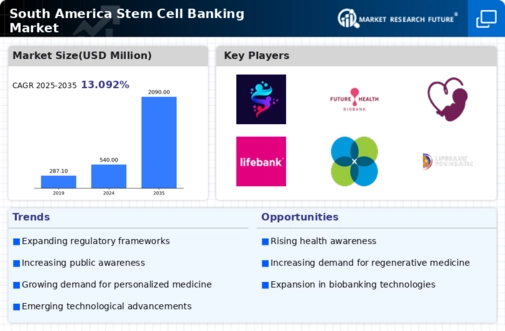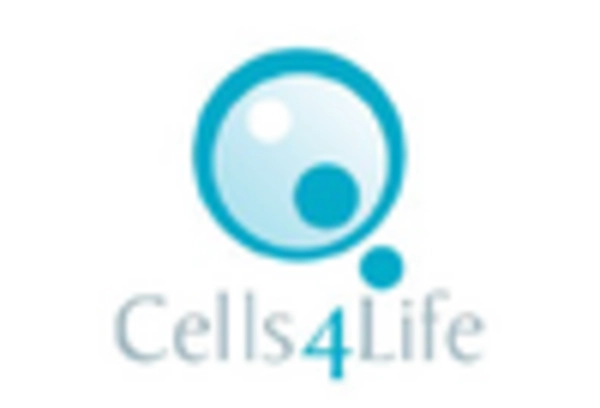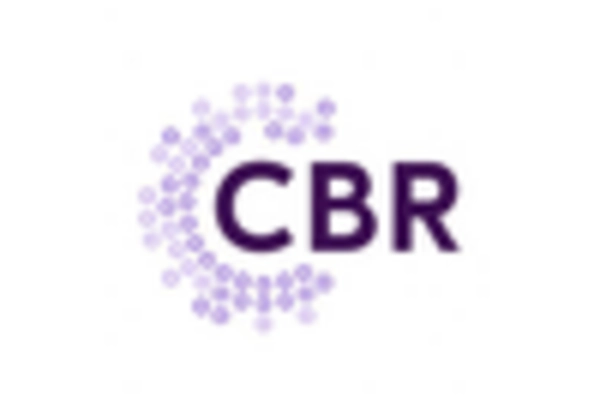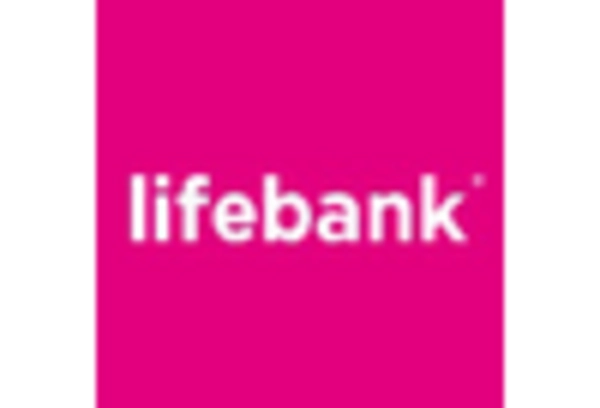Increasing Healthcare Investment
The stem cell-banking market in South America is experiencing a surge in investment from both public and private sectors. Governments are recognizing the potential of stem cell therapies and are allocating funds to support research and development. For instance, Brazil has increased its healthcare budget by approximately 10% in recent years, which includes funding for regenerative medicine initiatives. This influx of capital is likely to enhance the infrastructure and capabilities of stem cell banks, thereby expanding their services. Furthermore, as healthcare systems evolve, the demand for advanced medical solutions, including stem cell therapies, is expected to rise, driving the growth of the stem cell-banking market.
Advancements in Stem Cell Research
The stem cell-banking market is being propelled by significant advancements in stem cell research within South America. Research institutions and universities are increasingly focusing on the therapeutic applications of stem cells, leading to breakthroughs in treatment methodologies. For example, studies have shown that stem cells can potentially regenerate damaged tissues and organs, which is attracting attention from both the medical community and investors. The collaboration between academic institutions and private companies is fostering innovation, which may lead to new banking techniques and preservation methods. This dynamic environment is likely to enhance the overall appeal of the stem cell-banking market, as more individuals become aware of the potential benefits.
Growing Prevalence of Chronic Diseases
The rising incidence of chronic diseases in South America is a significant driver for the stem cell-banking market. Conditions such as diabetes, cardiovascular diseases, and neurodegenerative disorders are becoming increasingly common, necessitating innovative treatment options. According to recent health statistics, chronic diseases account for over 70% of deaths in the region. This alarming trend is prompting healthcare providers and patients to seek alternative therapies, including those derived from stem cells. As a result, the demand for stem cell banking services is likely to increase, as families look to preserve stem cells for potential future treatments, thereby propelling the growth of the stem cell-banking market.
Regulatory Support for Stem Cell Therapies
The regulatory landscape in South America is evolving to support the development and commercialization of stem cell therapies, which is beneficial for the stem cell-banking market. Countries like Argentina and Chile are implementing frameworks that facilitate clinical trials and the use of stem cells in medical treatments. This regulatory support is crucial for building public trust and encouraging investment in stem cell banking services. As regulations become more favorable, it is anticipated that more healthcare providers will offer stem cell banking options, thereby increasing accessibility for families. This trend could significantly boost the growth trajectory of the stem cell-banking market.
Rising Public Awareness of Stem Cell Benefits
Public awareness regarding the benefits of stem cell banking is steadily increasing in South America, which is a key driver for the stem cell-banking market. Educational campaigns and outreach programs are informing the population about the potential of stem cells in treating various medical conditions. As more individuals understand the advantages of preserving stem cells for future use, the demand for banking services is likely to rise. Surveys indicate that approximately 60% of parents are now considering stem cell banking for their children, reflecting a growing trend. This heightened awareness is expected to contribute positively to the expansion of the stem cell-banking market.


















Leave a Comment